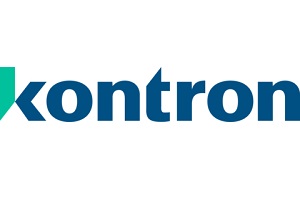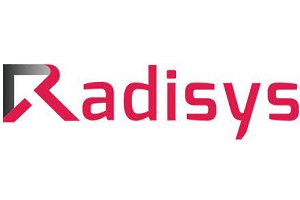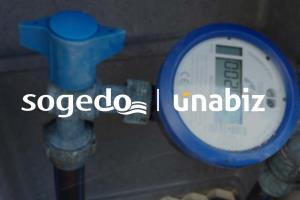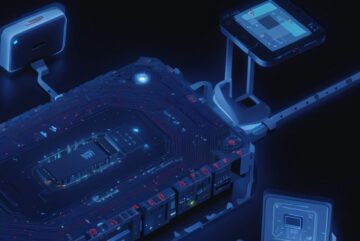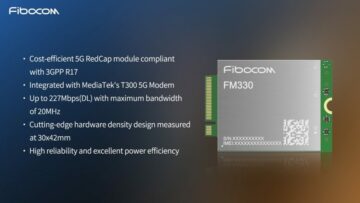Renewable energy sources are currently estimated to contribute to between 28% to30% of global energy production. The United Nations’ Sustainable Development Goals (SDGs) have called out the intent to substantially increase the share of renewable energy in the global energy mix by 2030. To meet the target of a sub-1.5 Celsius average global temperature rise, it is expected that more than 60% of global energy will be required to be produced by a renewable source by 2030, with wind power expected to play a substantial part in meeting these goals, given that wind is an abundant and inexhaustible resource that can produce electricity without any harmful pollution. However, a wind turbine is a complex piece of equipment comprising physical, mechanical, and electrical systems, with high, upfront capital investment.
As the dependence on wind energy grows, there is demand for larger wind turbines, because as the diameter of the wind turbines doubles the potential capacity quadruples, vastly increasing efficiency. The increase in size has created offshore and even floating deployments, as they do not fit on land, bringing with it new challenges for design and operation. According to the World Bank Group, there is 71,000 gigawatts (GW) of offshore wind resource potential globally, the vast majority of which remains unexplored and untapped.
However, the need for higher capacity makes the design of wind turbines more challenging since traditional validation methods such as testing, physical prototyping, and certifications are no longer feasible.
The role of digitisation
As the size of wind turbines increases, digitisation of the design and development cycle can prove to be extremely valuable. Not only does it help manufacturers achieve faster go-to-market, but it also enables more cost-effective development and designs that would be practically impossible to achieve through traditional processes.
For example, manufacturers need to develop lightweight and more efficient wind turbine drivetrains to bring down raw material and energy costs, which can be achieved by designing lightweight wind turbine generators with higher power density. Taller, more efficient, and reliable wind turbines are expanding in the wind market and accessing new, harsher environments—especially those offshore. The new technology can involve replacing the heavier glass fibre traditionally used for wind turbine blades with a lighter composite structure.
Modern turbines are sometimes greater than 200 meters in diameter, and their capacity increases too, with modern turbines having a capacity up to 12 megawatts (MW) while research is ongoing into turbines up to 20 MW. These turbines require large bearings to support the rotor blades. At these large sizes, the traditional approach of treating these bearings as rigid rings is no longer possible, since the bearings are required to be flexible. This means that designers must factor in several new physics parameters. They must perform several simulations such as structural analysis, fatigue analysis, and fluid dynamic analysis and understand how they work together as a holistic system to avoid unexpected failures during operation.
All processes associated with a wind turbine can be established as early as the prototype stage in a common data model: the digital twin allows you to digitally design and to test your wind energy plants before commencing series production. This saves valuable time and costs, while at the same time increasing the engineering quality. The digital twin of a wind turbine also allows a simulation of the critical phase prior to commissioning – as well as safe implementation. The servicing personnel can also undergo meticulous training in advance of actual commissioning.
Utilising IoT and digitalisation to ensure minimal wind turbine downtime
Even when the turbines are commissioned, digital representation through a digital twin is vital to optimise operations for high performance, reliability, and quality. The operation of a wind turbine is deceptively complex. All the disparate mechanical, electrical and electronics components and mechanisms need to operate in tandem to ensure the quality, reliability, and safety of the system. However, components such as the generator, gearbox, blades, and bearings are known to have the highest failure rates, which are often caused by fatigue stresses, cracks due to strains on the blades, tower or gearbox components, which can be caused by unfavourable weather conditions, and even bird strikes. All these failures lead to hazardous situations and costly shutdowns that have a huge impact on the wind farm. Having a digital representation allows for analysis and prediction of when these common failures will occur so they can be pre-emptively dealt with, and hazards and shutdown can be avoided.
Digitalisation requires embracing other technologies, in particular the Internet of Things (IoT), which is emerging as a powerful enabler for renewable energy asset management and can also contribute to the industry achieving the UN’s Sustainable Development Goals (SDGs) by providing intelligence to optimise the design and manufacture of these machines. To successfully create a digital twin, data needs to be collected across all relevant parts of the product lifecycle and this can be facilitated using IoT-enabled sensors. Real-time data can be fed back into comprehensive physics-based systems models to improve the accuracy with which we can predict how that system will then behave in real-world conditions.
Lifetime performance data gathered via IoT-supported sensors can be extremely valuable for better utilisation and maintenance. For instance, sensors can record friction in the gearbox or oil contamination due to a malfunction, or acoustic devices can help record excessive noise and vibration that indicates failures. Additional sensors include vibration sensors for gear box monitoring and accelerometers for tower sway and blade monitoring. Manufacturers can obtain a wide range of operational data which is analysed through predictive analytics that uses machine learning. It tracks vibrations from the nacelle – the unit that houses the generating equipment to which the rotor and blades are attached – as well as oil levels and data from third-party sensors.
Digitising this information can help predict mechanical failure, while software tools can help predict what component will fail at what stage in how much time.
AI is pivotal to digital twins
Digital twins are coming of age for these applications – from computer-aided engineering (CAE) we have multi-physics simulation software and finite element analysis simulation, combined with machine learning (ML) software, and other data-driven artificial intelligence (AI) technologies are increasingly playing a crucial role in determining the choice of materials and manufacturing processes to ensure precision and quality standards. By simulating the design, engineering and production phases, wind turbine manufacturers can drastically reduce design cycles, and asset failures thereby saving millions of dollars.
During wind turbine validation and testing phases, AI/ML approaches can help focus efforts on the most critical tests and fill the gaps by accurately predicting results between data points derived from sensors and metrology. However, this requires high-quality data from CAE simulations in the virtual world and effective use of sensors and metrology data. This allows a reduction in the number of tests necessary, enabling robust wind turbine designs to be certified and deployed sooner. In operation, a digital twin of the physical asset can use data from IoT sensors to feed into the analysis to predict failures.
OEM’s can reap the benefits of getting to market faster and reducing cost by employing digital platforms and embracing the power of IoT. These tools can accelerate innovation and improve engineering design and productivity across the complete value chain right from component suppliers, turbine manufacturers, wind-farm operators/owners, and even independent power producers.
Join us for a unique wind energy webinar series – Winds of Change – to learn how Hexagon solutions can help the wind energy industry overcome performance, reliability, and lifecycle barriers.


Article by Xiaobing Hu, Head of Applied Solutions at Hexagon’s Manufacturing Intelligence division
Comment on this article below or via Twitter: @IoTNow_
- SEO Powered Content & PR Distribution. Get Amplified Today.
- PlatoData.Network Vertical Generative Ai. Empower Yourself. Access Here.
- PlatoAiStream. Web3 Intelligence. Knowledge Amplified. Access Here.
- PlatoESG. Carbon, CleanTech, Energy, Environment, Solar, Waste Management. Access Here.
- PlatoHealth. Biotech and Clinical Trials Intelligence. Access Here.
- Source: https://www.iot-now.com/2023/09/29/136904-is-iot-and-digitisation-the-key-to-accelerating-wind-turbine-development-for-united-nations-sdgs/
- :has
- :is
- :not
- $UP
- 000
- 12
- 20
- 200
- 2030
- 27
- a
- abundant
- accelerate
- accelerating
- accessing
- According
- accuracy
- accurately
- Achieve
- achieved
- achieving
- across
- actual
- Additional
- advance
- age
- AI
- AI/ML
- All
- allows
- also
- an
- analysis
- analytics
- and
- any
- applications
- applied
- approach
- approaches
- ARE
- article
- artificial
- artificial intelligence
- Artificial intelligence (AI)
- AS
- asset
- asset management
- associated
- At
- attached
- average
- avoid
- avoided
- back
- Bank
- barriers
- BE
- because
- before
- behave
- below
- benefits
- Better
- between
- bird
- BLADE
- Box
- bring
- Bringing
- but
- by
- called
- CAN
- Capacity
- capital
- caused
- Celsius
- certifications
- Certified
- chain
- challenges
- challenging
- choice
- combined
- coming
- commencing
- Common
- complete
- complex
- component
- components
- comprehensive
- comprising
- conditions
- contribute
- Cost
- cost-effective
- costly
- Costs
- create
- created
- critical
- crucial
- Currently
- cycle
- cycles
- data
- data points
- data-driven
- dealt
- Demand
- density
- dependence
- deployed
- deployments
- Derived
- Design
- designers
- designing
- designs
- determining
- develop
- Development
- Devices
- digital
- digital platforms
- digital twin
- digitalisation
- digitally
- digitisation
- disparate
- do
- does
- dollars
- doubles
- down
- drastically
- due
- during
- dynamic
- Early
- Effective
- efficiency
- efficient
- efforts
- electricity
- Electronics
- element
- embracing
- emerging
- employing
- enabler
- enables
- enabling
- energy
- Engineering
- ensure
- equipment
- established
- estimated
- Ether (ETH)
- Even
- example
- expanding
- expected
- extremely
- facilitated
- factor
- FAIL
- Failure
- farm
- faster
- fatigue
- feasible
- Fed
- fill
- fit
- flexible
- floating
- fluid
- Focus
- For
- friction
- from
- gaps
- gathered
- Gear
- generating
- generator
- generators
- getting
- given
- glass
- Global
- Globally
- Go-To-Market
- Goals
- greater
- Group
- Grows
- harmful
- harsher
- Have
- having
- head
- help
- High
- high-quality
- higher
- highest
- holistic
- houses
- How
- However
- HTTPS
- huge
- Impact
- implementation
- impossible
- improve
- in
- include
- Increase
- Increases
- increasing
- increasingly
- independent
- indicates
- industry
- information
- Innovation
- instance
- Intelligence
- intent
- Internet
- internet of things
- into
- investment
- involve
- iot
- IT
- jpg
- Key
- known
- Land
- large
- larger
- lead
- LEARN
- learning
- levels
- lifecycle
- lighter
- lightweight
- longer
- machine
- machine learning
- Machines
- maintenance
- Majority
- MAKES
- management
- Manufacturers
- manufacturing
- Market
- material
- materials
- max-width
- means
- mechanical
- mechanisms
- Meet
- meeting
- methods
- meticulous
- Metrology
- millions
- minimal
- mix
- ML
- model
- models
- Modern
- monitoring
- more
- more efficient
- most
- much
- must
- Nations
- necessary
- Need
- needs
- New
- news
- no
- Noise
- now
- number
- obtain
- occur
- of
- often
- Oil
- on
- ongoing
- only
- operate
- operation
- operational
- Operations
- optimise
- or
- Other
- out
- Overcome
- parameters
- part
- particular
- parts
- perform
- performance
- Personnel
- phase
- physical
- Physics
- piece
- pivotal
- plants
- Platforms
- plato
- Plato Data Intelligence
- PlatoData
- Play
- playing
- points
- Pollution
- possible
- potential
- power
- powerful
- practically
- Precision
- predict
- predicting
- prediction
- predictive
- Predictive Analytics
- Prior
- processes
- produce
- Produced
- Producers
- Product
- product lifecycle
- Production
- productivity
- prototype
- prototyping
- Prove
- providing
- quality
- range
- Rates
- Raw
- real world
- real-time
- real-time data
- record
- reduce
- reducing
- reduction
- relevant
- reliability
- reliable
- remains
- Renewable
- renewable energy
- Reports
- representation
- require
- required
- requires
- research
- resource
- Results
- right
- rigid
- Rise
- robust
- Role
- safe
- Safety
- same
- saving
- SDGs
- sensors
- Series
- servicing
- several
- Share
- shutdown
- shutdowns
- simulation
- simulations
- since
- situations
- Size
- sizes
- So
- Software
- Solutions
- Source
- Sources
- Stage
- standards
- Strains
- Strikes
- structural
- structure
- substantial
- substantially
- Successfully
- such
- suppliers
- support
- sustainable
- Sustainable Development
- system
- Systems
- Tandem
- Target
- Technologies
- Technology
- test
- Testing
- tests
- than
- that
- The
- the world
- their
- then
- There.
- thereby
- These
- they
- things
- third-party
- this
- those
- Through
- time
- to
- together
- too
- tools
- Tower
- tracks
- traditional
- traditionally
- Training
- treating
- turbine
- twin
- Twins
- undergo
- understand
- Unexpected
- unique
- unit
- United
- united nations
- untapped
- us
- use
- used
- uses
- using
- utilisation
- validation
- Valuable
- value
- Vast
- via
- Virtual
- virtual world
- vital
- we
- Weather
- webinar
- WELL
- What
- when
- which
- while
- wide
- Wide range
- will
- wind
- wind energy
- wind power
- wind turbine
- with
- without
- Work
- work together
- world
- World Bank
- would
- you
- Your
- zephyrnet

